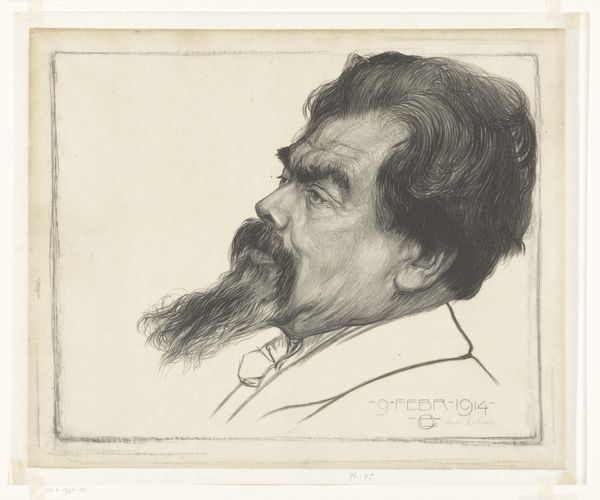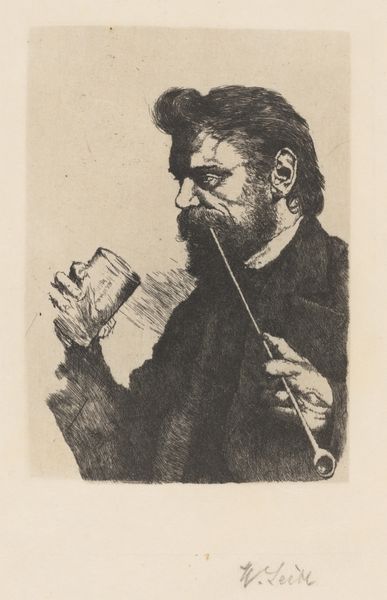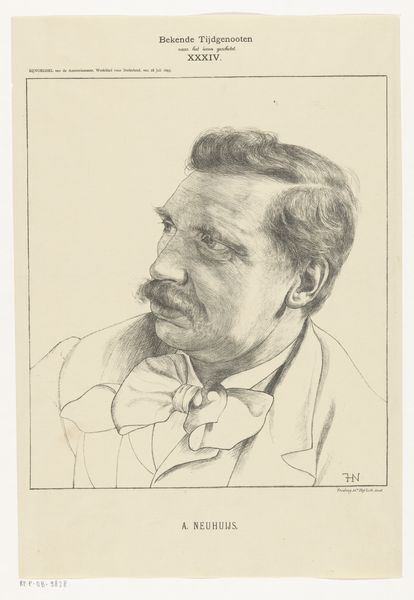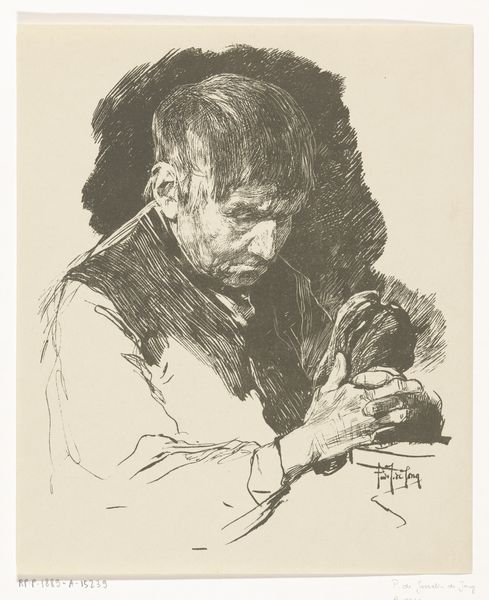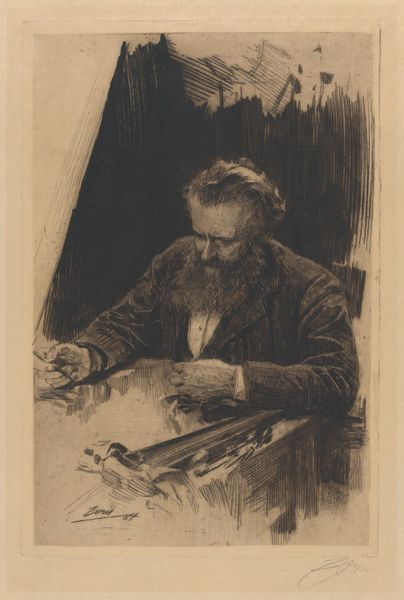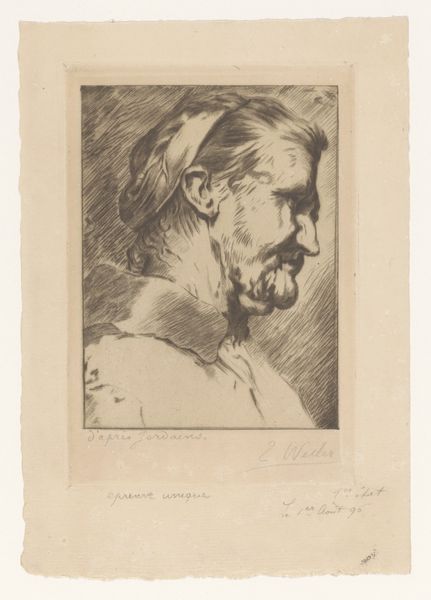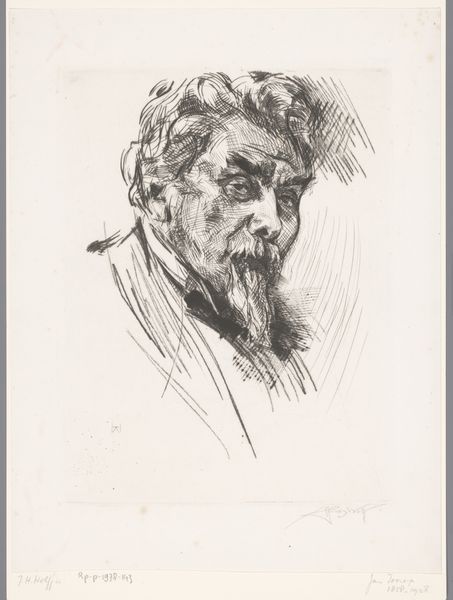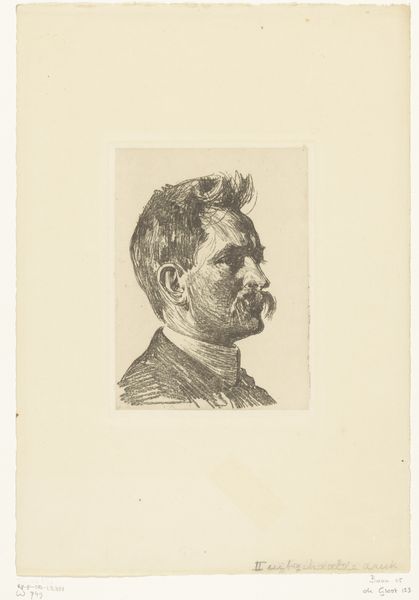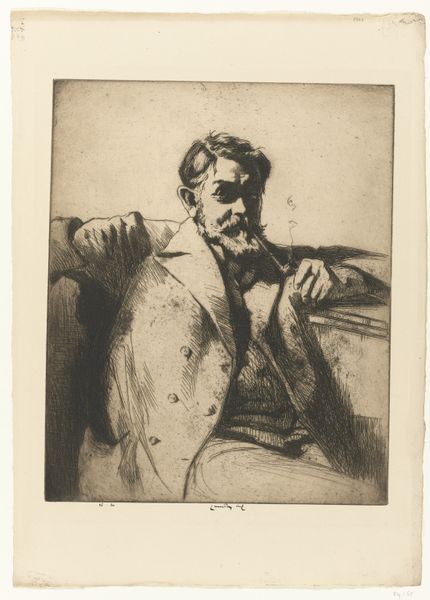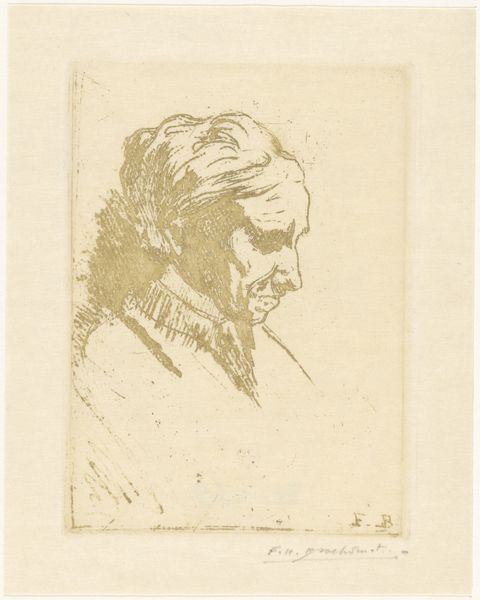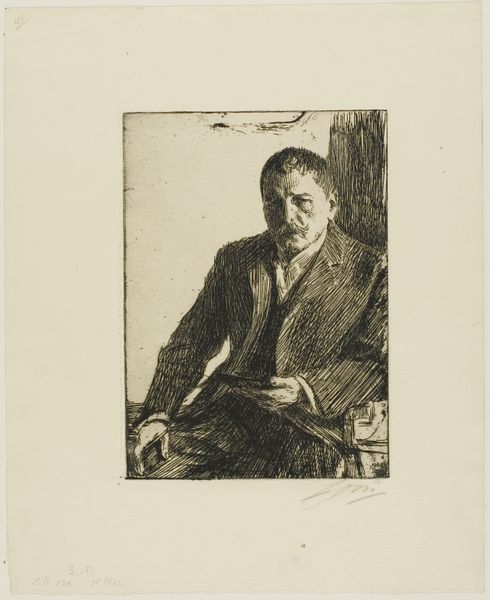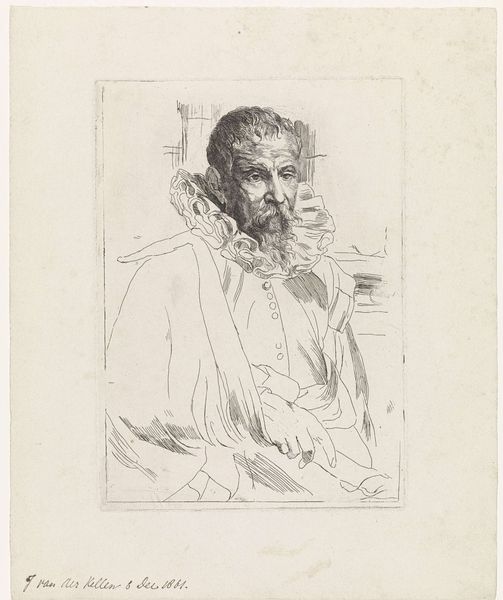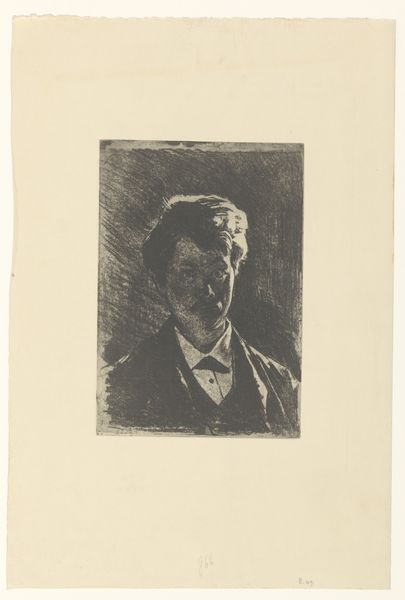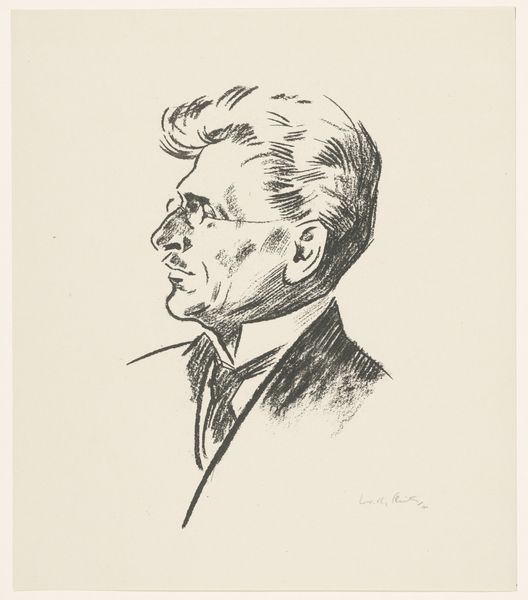
drawing, print, etching, paper, pen
#
portrait
#
drawing
# print
#
etching
#
caricature
#
figuration
#
paper
#
pen
#
portrait drawing
Dimensions: height 410 mm, width 293 mm
Copyright: Rijks Museum: Open Domain
Editor: This is Jan Veth's "Portrait of August Bebel," made in 1896. It’s a drawing or print, an etching of a man writing. I'm struck by the density of the lines and the focused energy in the subject's posture. How would you interpret this work formally? Curator: Let us observe how the artist has orchestrated the composition. Note the square framing, effectively bisecting the figure at the elbows. The concentration of linework defines Bebel’s face and hands, pulling the viewer’s focus to the act of writing itself. What purpose do you believe this serves? Editor: Perhaps to emphasize Bebel’s intellectual labor, the physical manifestation of his thoughts? I find the limited tonal range, achieved purely through line variation, quite compelling. Curator: Precisely. The artist’s choice to render form through meticulously hatched lines generates an almost tactile surface. Consider the subtle variations in pressure and direction: they sculpt the contours of Bebel’s face, defining his features with striking precision. Also note how the dense network of lines is set against relatively empty space. The frame further contributes to the containment. Editor: So the stark contrast is strategic. How do you mean the containment relates? Curator: The image confines a momentous, creative act. How does the frame act in the composition of the piece? Editor: I now see how this interplay underscores the essence of intellectual engagement. Thank you, that has deepened my appreciation significantly. Curator: Indeed, such rigorous observation yields the richest understanding. The careful formal rendering reflects an ideology.
Comments
No comments
Be the first to comment and join the conversation on the ultimate creative platform.
